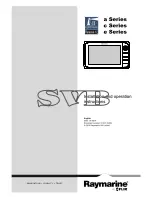
14
MkII software attempts to distinguish between a timeout because there is truly nothing there, versus a
timeout because it simply missed a chirp or two while your hand wiggled around. If the sensor hears
an echo before the timeout, it returns the elapsed time in microseconds. The Altura MkII software uses
this time to calculate how far away your hand is, and decides what particular data this represents – a
note number or a control change value. That data is worked into a standard MIDI message, which is
then sent to the MIDI OUT cable.
The sensors monitor a cone-shaped space. They are greaat at spotting things like walls. To spot your
hand, you will have to learn exactly where the sensor is looking. This takes practice, as with any fretless
instrument.
When most people play with an Altura MkII for the first time, their instinct is to wiggle their fingers
and flap their hands. This will produce chaotic results, which may be what you are after. However,
for precise melodic control, you must hold your hand flat, steady, and perpendicular to the axis of the
sensor. For stage drama, you might want to perform with paddles or dinner plates strapped to your
hands. See our YouTube channel for helpful demo videos.
To optimize playability and reliability, we have pre-set the active sensor range to about 3” – 40” (8 –
100 cm). Any object in this range can trigger the Altura: dangling cables, a guitar neck, loose clothes
or a swinging pony tail. Keep the play-zone clear!
Since the Altura MkII uses sonar, and measures the speed of sound in air, its performance is somewhat
subject to atmospheric conditions. The active range will vary a little if you move between extreme
climates. The default range values can be changed if you hack the open-source software. See
“Programming The Altura” below. The sensors actually have a maximum range of about 4 meters! You
could use the Altura MkII as a door bell, a motion-sensor alarm, or part of an interactive installation,
where Alturas are triggered by participants moving about the display space.
3. LEFT DISTANCE SENSOR – MIDI CONTROL FUNCTIONS
The left sensor generally determines a MIDI data value to send to the MIDI OUT. How that data is used
is determined by which FUNCTION is currently selected. See “MIDI Function Select” on page 16.
When using Pitch Bend, removing your hand snaps the pitch back to No Bend, just like when you
release the Pitch Bend wheel on a conventional controller. When using the other functions, however,
removing your hand will fix the controller at the current value, like a slider. You set maximum and
minimum values with the DATA NEAR and DATA FAR knobs. See each FUNCTION section below.
4. RIGHT SENSOR - MIDI PITCH
In Functions 1 - 5 and 8, the right sensor transmits Note-On messages, thus controlling pitch. Whenever
the Altura MkII detects a new note to send, it first turns off the current note by transmitting a “Note On,
velocity 0”message.













































